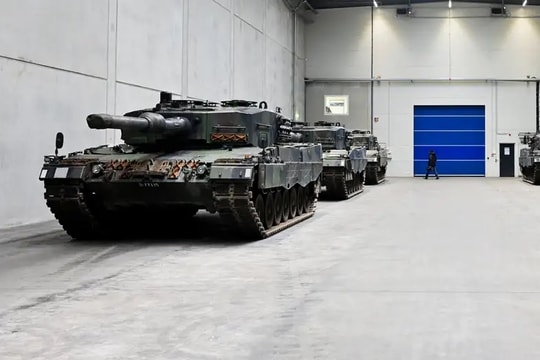For ten years I was a freelance 'conférencier' for the European Commission - essentially presenting its basic principles to groups of visitors. Among the handouts we received was a reflection paper on the future of European Defence, a publication produced in 2017.
Now it is true that this publication is eight years old. Much has happened since then, including the UK's withdrawal from the EU. But there is still a very clear message from this document, made clear when on page 9 it compares the defence capabilities of the EU-28 (counting the UK in at that point) with the USA.
Certainly, the EU-28 (as it was then) spent less than the USA on defence, though it spent nearly half as much (227 billion euros as compared to 545 billion). Certainly, it spent less of its GDP (1.34% as opposed to 3.3% of the US). But the most significant figure came lower down the page.
Main battle tanks - USA, one type, EU 17 types. Destroyers/frigates - EU 29 types, USA 4 types. Fighter planes, EU 20 types, USA 6 types.
Even the fact that many EU countries belong to NATO hasn't been able to overcome the many different weapon systems.
Doubtless the figures look different in 2025. The EU is now spending more of its GDP on defence. The UK is no longer included. But even this snapshot from eight years ago shows the real problem with EU defence capability.
It isn't that it's spending too little. It isn't that its capabilities are less than those of Russia - it is far wealthier than Russia and spends far more on defence in real terms even if Russia spends a much higher percentage of its GDP. It is simply too fragmented.
Member states maintain their own weapons systems, reward their own firms with defence orders and end up producing a mishmash of systems without interoperability.
Endless talk of the Russian threat bolsters spending and both helps the revenue of American manufacturers which Trump wants Europeans to use and provides business for domestic arms manufacturers. But the development of a single European army with - for instance - a single battle tank - would do far more to bolster European security than simply throwing money at Europe's - or the EU's - many different defence budgets.
Commission President Van der Leyen’s recent announcement of an 800 billion euro defence package had more to do with announcing ways in which the money could get round constraints on EU spending budgets than ways in which it might actually help to ‘reunite Europe’ as a coordinated whole.
Perhaps the Commission’s latest defence White Paper due this month will address this question more. In the meantime, the real source of European insecurity in the defence field remains political, not economic.

